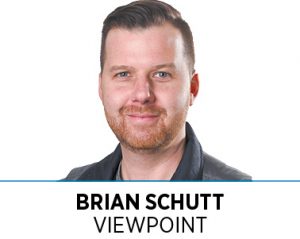Brian Schutt: Elevate your imagination for what real estate can be
Pragmatically, beautiful real estate can become central to community identity. By helping the investment last longer, beauty increases sustainability. The Governor of Indiana, Eric Holcomb, has announced that the READI 2.0 proposals are in place to address the state's commitment to quality-of-life and quality of place investment initiatives. The proposals aim to elevate the imagination for real estate development beyond utility and function to a vision of "irreplaceable real estate," which was coined by John Marsh, founder of Alabama-based Marsh Collective, who has overseen over $1.5 billion in redemptive real estate in small towns around America. The report by the Brookings Institute suggests that improving quality of life is the best path to Midwestern rejuvenation, particularly in smaller places with higher employment and population growth than similarly situated communities. Pragmatically, beautiful real estate can become central to community identity and sustainability, helping the investment last longer and increasing sustainability. However, as the Midwest lacks aesthetic advantages like mountains and oceans, the built environment is more central to our quality.

Published : 2 months ago by in Finance
READI 2.0 proposals are in, and according to Gov. Eric Holcomb, “Indiana is leading the nation in quality-of-life and quality-of-place investment initiatives.”
“Through the state’s READI program, we’re collaboratively investing billions to grow Indiana’s population, cultivate vibrant and sustainable communities, and better the lives of all Hoosiers today and tomorrow,” he said.
A Brookings Institute report from 2022 titled “Improving quality of life—not just business—is the best path to Midwestern rejuvenation” says that “smaller places with a higher quality of life experience both higher employment and population growth than similarly situated communities, including those that rank high by traditional economic competitiveness measures.”
Reading through the 15 regional proposals, themes of innovation and collaboration abound. Having redeveloped a place-based collaborative workspace called Refinery46 that is designed to foster growth through humble collaboration, I have experienced how investment in something lasting will be essential.
For these proposals to achieve the vision outlined, leaders must elevate their imagination for real estate development beyond mere utility and function that characterizes so much of modern architecture to something more lasting and transcendent by prioritizing beauty and endeavoring to a vision of “irreplaceable real estate.”
“Irreplaceable real estate” was coined by John Marsh, the founder of Alabama-based Marsh Collective, who has helped steward more than $1.5 billion in redemptive real estate in small towns (with populations of 800 to 180,000) around America. Marsh defines it as real estate “built by people who don’t live anymore, with materials we can’t get anymore, with methods of construction we don’t do anymore, with entitlements we can’t get approved anymore.”
There’s both a pragmatic and a philosophical motivation behind investment in beauty in placemaking.
Pragmatically, beautiful real estate can become central to community identity. By helping the investment last longer, beauty increases sustainability. Beyond that, because the Midwest lacks many aesthetic advantages like mountains and oceans that peer cities competing for people have, the built environment is more central to our quality of place.
Philosophically, beauty of place touches something deep in the human condition. From Plato to Kant through to more modern philosopher Sir Roger Scruton, beauty is seen as something transcendent.
According to Scruton, beauty can “lift us out of this world into a higher sphere of contemplation. That idea has been an inspiration throughout our civilization.” He goes on: “Real architecture is precisely getting beyond the shed to the settlement, in which the earth is transformed from a mere habitat to a lasting habitation.”
A risk in any bureaucratic endeavor is that, within the collaborative decision making, utility and risk-reduction become central to decision-making. One need only take a trip to the City-County Building for a cautionary example. The principle that “form follows function” was coined by Louis Sullivan in the late 19th century. Scruton rejects this.
“In ordinary architecture Sullivan has got it the wrong way around. Form and function are connected, but it’s not that form follows function, it’s that function follows form,” he writes. “In Lower Manhattan, those buildings, they love them. They want to keep them, so the function keeps on changing. It’s because of the form that [the buildings] fulfill one function after another.”
In “The Timeless Way of Building,” architect and builder Christopher Alexander set out to distill the design principles that have proven to promote the flourishing of communities. “We can come alive only to the extent the buildings and towns we live in are alive,” he said. “In a world which is healthy, whole, alive and self-maintaining, people themselves can be alive and self-creating. In a world which is unwhole and self-destroying, people cannot be alive: they will inevitably themselves be self-destroying, and miserable.”
Beauty that leads to topophilia, the love of place, is an essential element to making the most of READI 2.0 and revitalizing communities across Indiana.•
Schutt is co-founder of Homesense Heating & Cooling and Refinery46 and an American Enterprise Institute civic renewal fellow.
Topics: Real Estate
